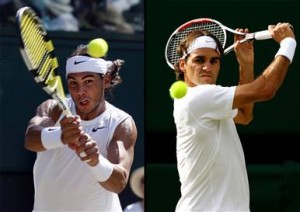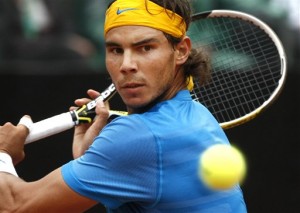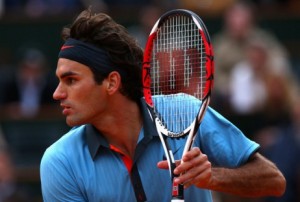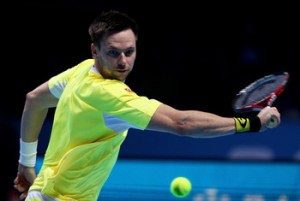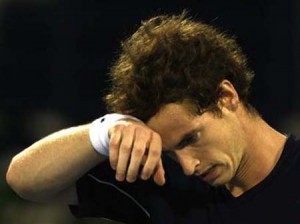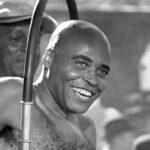Will Rafael Nadal Still Be Ranked World No. 1 in December?
Men’s tennis hierarchy is ruled by a complex system of ranking points. This is why players are relentless on court, fighting for the maximum number of points available in each tournament.
Being in the top 10 in men’s tennis brings money, fame and fortune plus an advantageous starting point in each tournament.
Since the inception of the ATP ranking system in 1973, 24 men have held the No. 1 ranking with Pete Sampras holding it the longest and Patrick Rafter holding it the shortest amount of time.
Roger Federer holds the record for the most consecutive weeks at No. 1 at 237 weeks.
Since the time Sampras gave up his hold on the No. 1 ranking in 2000, 6 different men held the No. 1 ranking until Roger Federer succeeded to the top in 2004.
After February of 2004, only two players have held the No. 1 spot, Roger Federer and the current No. 1, Rafael Nadal.
The question is, how long will these top two fight it out and hold onto the top spot? Many feel their period of domination is coming to an end and that there is an opportunity for someone to topple Nadal from the top spot.
Starting with the current tournament at the BNP Paribas Open at Indian Wells, what will it take to knock off the current king of the mountain, Rafael Nadal, and who will be able to accomplish it?
Rafael Nadal – Current World No. 1
For all appearances, Rafael Nadal has an iron grip on the No. 1 ranking in men’s tennis. Starting with the BNP Paribas Open at Indian Wells, Nadal has 12,390 points, leading the No. 2 ranked player, Roger Federer, by 4,425 points.
No way can Nadal lose that lead, you contend. Well, you may be wrong.
Nadal is the defending champion at the French Open, Wimbledon and the U.S. Open. If instead of winning, Nadal simply finishes as runner up in the next three slams he will lose 2,400 points or over 50 percent of his lead.
If Federer were to win those same tournaments he would gain 4,560 points. In fact, even by making the next three slam finals the Swiss gains 2,160 points.
Beginning with the Master’s 1000 tournament at Indian Wells, Nadal has 11,985 points to defend until the end of 2011. That means in order to keep his current total of 12,390 points Nadal must at least do as well as he did in 2010 at the tournaments where he competed last year.
The World No. 1 can pick up points at Indian Wells and the following week in Miami where he lost last year during the semifinals. But after that Nadal won in Monte Carlo, Rome, Madrid and the French Open.
Even if Nadal finishes second in those four tournaments alone he will lose 2,000 points. In the 15 events he played starting with Indian Wells, Nadal won seven titles, was a finalist once, reached the semifinals four times, the quarterfinals twice and was dismissed in the round of 16 in Shanghai.
Nadal, simply put, has few places to improve. From this point forward the Majorcan has major points to defend, especially during the clay season where he went undefeated.
Of all the points available in Nadal’s final fifteen tournaments in 2010, Nadal won 72.6 percent of them which is a stunning feat. Duplicating it will be difficult, very difficult.
Contender No. 1 Roger Federer – Down by two slam titles, Rome and Miami
Roger Federer, with 7,965 ranking points, stated recently that he wishes to climb back to the No. 1 ranking in order to pass Pete Sampras’ long-standing record of 286 weeks at No. 1.
Federer was on the verge of passing that mark in 2010 when he lost in the quarterfinals of the French Open to Robin Soderling. The fabulous Federer remains one week shy of the Sampras record.
So what will it take for the Swiss to climb back to the top. First it will take Nadal slipping a little from his outstanding 2010 campaign.
But Nadal slipping will not be enough. Federer will also have to win a major or two and improve his match winning record, especially in the Masters 1000 events.
Federer has 7,235 points to defend beginning with Indian Wells which is 4,750 less than Nadal.
Unlike Nadal, Federer has plenty of opportunities to add to his point totals, especially from now until Madrid where Federer reached the finals.
You have to suspect that Federer will improve over his quarterfinal exits at the French Open and Wimbledon.
For the remainder of 2010 starting with Indian Wells, Federer played 16 tournaments winning 43.2 percent of the total points available.
Eight of the 16 tournaments were Masters 1000 events where Federer amassed 3,305 points out of a possible 8,000 or 41.3 percent. Even going one round deeper in these eight Masters events would give the Swiss an additional 1,500 points.
Federer making enough gains to win back the No. 1 ranking by the end of 2011 exists as a distinct possibility.
Contender No. 2 Novak Djokovic – Down by 3 slam titles, Miami
Not only could Djokovic with 7800 points surpass Federer in 2011, the Serb could also overtake the World No. 1 and assume that top rung himself.
Djokovic trails Federer by a mere 165 points and Nadal by 4,590. Again, it follows that Nadal would have to slip down a notch or two to allow those beneath him to gain on the Majorcan’s point lead.
Like Federer, Djokovic did not fare well at Indian Wells or Miami in 2010. The Serb’s run from now through Wimbledon was not truly spectacular.
In total Djokovic played 16 tournaments starting with Indian Wells and ending with the WTF in London.
He earned 5,175 points during this run which he must defend in 2011. In all Djokovic won 30.4 percent of the 17,000 total points available.
The furthest the Serb advanced during the first half of the season were the semifinals in Monte Carlo and at the All England Club.
If Djokovic made the finals of all three slams remaining in 2011, he would pick up 1,320 points if he won the U.S. Open he would add 2,120 to his total point gain.
If the Serb went one round deeper into each of the remaining Masters 1000 tournaments in 2011 he would pick up 1,630 additional points.
With fewer points to defend, and playing exceptionally well of late, Djokovic could certainly rise to the No.1 ranking or more than likely to the No. 2 spot by the end of 2011.
Contender No. 3. Robin Soderling – Down by 3 slams, Rome and Miami
Swede Robin Soderling with 6,050 ATP ranking points trails Nadal by 5,935 as well as the man above him, Novak Djokovic, by 1,865.
The stretch to reach No. 1 is considerable, but the possibility of moving up a position or two is well within the Swede’s capabilities.
Beginning with Indian Wells, Soderling played 18 tournaments ending with the WTF in London as one of the final eight in the men’s tour.
From those 18 events, the Swede accumulated 5,065 points to defend in 2011. He won 28.5 percent of all the points available in those 18 tries.
Making up almost 6,000 points in one year may be asking too much for the World No. 4. Nadal, however, did it in 2010 winning three majors in a row starting with the French Open. Most consider Nadal’s run as extraordinary. Few would be able to equal or surpass it.
Soderling’s areas of greatest opportunity for improvement besides the clay season leading up to the French Open would be the U.S. summer hard court season.
Soderling’s overall results at the 2010 majors were not bad. The Swede was a finalist at the 2010 French Open and a quarterfinalist at Wimbledon and the U.S. Open.
It would help his rise considerably to grab one of those elusive slam titles in 2011.
Contender No. 4 – Andy Murray – Down by three slams, the WTF Championship, Cincinnati
Where in the world is the Scot Andy Murray? He seems to have faded from the top rankings as well as the discussion about being the future No. 1 player in men’s tennis.
Currently Murray holds the No. 5 spot in the ATP ranking with 5715 points. The Scot trails World No. 1 Nadal by 6,675 points but he trails Soderling ranked just above him by only 335 points.
Murray remains a slam away from Djokovic and Federer.
Starting with Indian Wells, Murray played 17 events giving him 4,515 points to defend. In playing those tournaments, Murray won 25.1 percent of the total points achievable.
That gives the Scot plenty of room to improve in 2011. However, Murray was ousted in his opening match at this year’s BNP Paribas Open at Indian Wells, so he will continue his downward slide.
Murray has ample room to improve especially in the first half of the season if he is fully recovered from injuries that have slowed him down so far this season.
While it may be asking too much for Murray to bounce all the way up to the No. 1 spot, it is not unrealistic to see him stretch past Soderling, even past Djokovic and Federer to the No. 2 spot.
But to do that, Murray must make a standout showing in the upcoming 2011 clay court season.
The bottom remains difficult for any of the contenders unless Nadal slips badly. The race will tighten up in 2011 and players will move closer. But as 2011 closes, expect Nadal to remain on top guarding his place on the mountain top.
